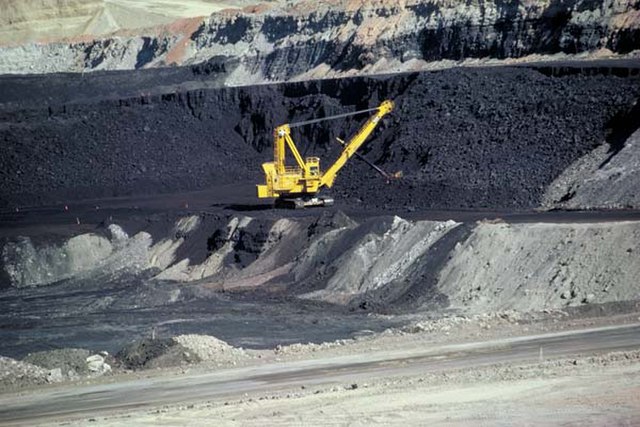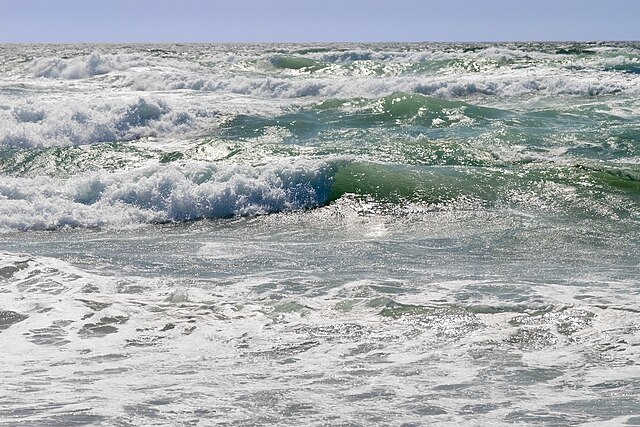A non-renewable resource is a natural resource that cannot be readily replaced by natural means at a pace quick enough to keep up with consumption. An example is carbon-based fossil fuels. The original organic matter, with the aid of heat and pressure, becomes a fuel such as oil or gas. Earth minerals and metal ores, fossil fuels and groundwater in certain aquifers are all considered non-renewable resources, though individual elements are always conserved.
A coal mine in Wyoming, United States. Coal, produced over millions of years, is a finite and non-renewable resource on a human time scale.
Raw gold ore that is eventually smelted down into gold metal
Rössing uranium mine is the longest-running and one of the largest open pit uranium mines in the world, in 2005 it produced eight percent of global uranium oxide needs (3,711 tons). The most productive mines however are the underground McArthur River uranium mine in Canada which produces 13% of the world's uranium, and the similarly underground poly-metallic Olympic Dam mine in Australia, which despite being largely a copper mine, contains the largest known reserve of uranium ore.
The Three Gorges Dam, the largest renewable energy generating station in the world.
Natural resources are resources that are drawn from nature and used with few modifications. This includes the sources of valued characteristics such as commercial and industrial use, aesthetic value, scientific interest, and cultural value. On Earth, it includes sunlight, atmosphere, water, land, all minerals along with all vegetation, and wildlife.
The rainforest in Amazon, in the Marquesas Islands, is an example of an undisturbed natural resource. Forest provides timber for humans, food, water and shelter for the flora and fauna tribes and animals. The nutrient cycle between organisms forms food chains and fosters a biodiversity of species.
The Carson Fall in Mount Kinabalu, Malaysia is an example of undisturbed natural resources. Waterfalls provide spring water for humans, animals and plants for survival and also habitat for marine organisms. The water current can be used to turn turbines for hydroelectric generation.
The ocean is an example of a natural resource. Ocean waves can be used to generate wave power, a renewable energy source. Ocean water is important for salt production, desalination, and providing habitat for deep-water fishes. There is biodiversity of marine species in the sea where nutrient cycles are common.
A picture of the Udachnaya pipe, an open-pit diamond mine in Siberia. An example of a non-renewable natural resource.








